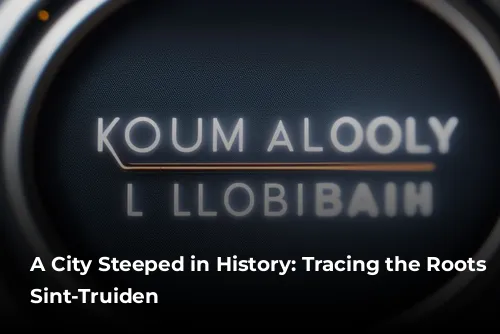Few cities can boast a history as well-documented and captivating as Sint-Truiden. The very name itself hints at its origins. Sint-Truiden, derived from Trudo, a Frankish aristocrat, reveals the city’s beginnings. Trudo, a man of faith, established a church and monastery on a small elevated plateau, overlooking the Cicindria River, which flowed through a deep valley to the north.
From Humble Beginnings to a Thriving Abbey
This small community, nestled around the abbey, blossomed into a prosperous center. Through the centuries, the abbey witnessed the ebb and flow of the city’s fortune. In the eleventh century, a significant turning point arrived. Pilgrimages to Trudo’s tomb not only enriched the abbey but also fostered a bustling economy, attracting many seeking opportunities beyond agriculture.
A City Takes Shape
During this period, in the mid-eleventh century, Abbot Adelardus commissioned the construction of a magnificent abbey church. The tower and surviving crypt still offer a glimpse into the grandeur of this once-imposing structure, stretching over a hundred meters in length. These abbey buildings stand as silent testament to the enduring legacy of Trudo’s foundation. Adelardus also played a crucial role in rebuilding the Our Lady’s Church and constructing the Church of Sint-Gangulfus.
Under the astute leadership of Abbot Adelardus, who also shared governance with the Bishop of Metz, Sint-Truiden underwent a significant transformation. The town, which had grown around the abbey, was fortified with an earthen wall, wooden palisades, and fortified gates, signifying its elevation to city status.

A City Defined by Trade and Governance
In 1129, the initial earthen wall was replaced by a sturdy stone fortification, complete with imposing gates and towers. Although these defensive structures were dismantled in 1675, the layout of the city park and ramparts still reflects their past. The remnants of the Brustemporch, an underground section of the fortifications, endure to this day.
The growth of the medieval city was fueled by the textile industry and international trade. The Grote Markt stands as a testament to this vibrant commercial past. Originally the church square, the space was gradually transformed to accommodate bustling market activities. At the juncture of the abbot’s district and the prince-bishop’s (from 1227 onwards, the prince-bishop of Liège), a grand hall was erected. This hall was later incorporated into the impressive city hall, built in the eighteenth century. Alongside the abbey tower and the Our-Lady’s Church, this majestic structure became a symbol of the city’s identity.
The city’s economic and social life was structured around thirteen distinct trades. Despite being part of the Duchy of Liège, the city fought for greater autonomy and ultimately achieved democratic control over its municipal government. A platform adorned with an eagle served as a symbol of this hard-won independence.
A City Redefined: From Stagnation to Renewal
Following a period of stagnation from the fifteenth to the nineteenth centuries, a wave of renewal swept through Sint-Truiden. The eighteenth century saw the embellishment of monastery buildings and private homes. After 1830, the vacant monastery buildings were transformed into educational institutions and nursing centers, establishing Sint-Truiden as a hub for learning and healthcare. The city’s agricultural heart remained strong, with fruit cultivation, which emerged in the early nineteenth century, adding a distinctive character to the local economy.
A City of Ancient Traditions and Modernity
The early twentieth century witnessed a surge in urban development, with the creation of new streets and neighborhoods. The ancient municipal borders were abolished, leading to the amalgamation of communities with their own rich histories. Zepperen, the birthplace of Trudo, reminds us of the city’s religious roots. Brustem, with its fortress built by the Counts of Loon against Sint-Truiden, speaks of past conflicts. Duras evokes memories of the local counts who were often entangled in the power struggles surrounding the abbey and city.
Today, this medieval city, along with its fourteen historic communities, forms a harmonious blend of ancient traditions and modern vitality in the fertile landscape of Haspengouw. Sint-Truiden stands as a testament to the enduring power of history, culture, and community.



